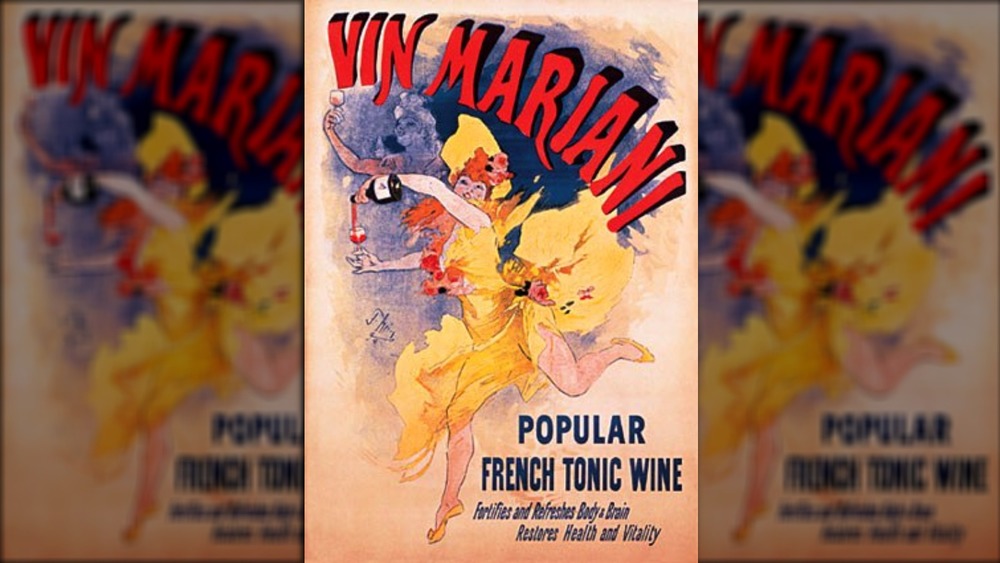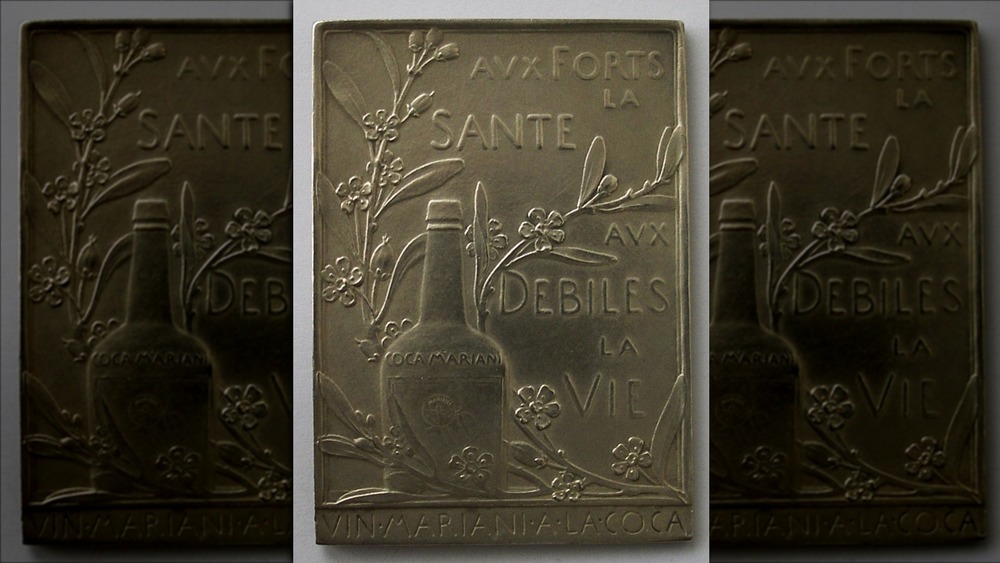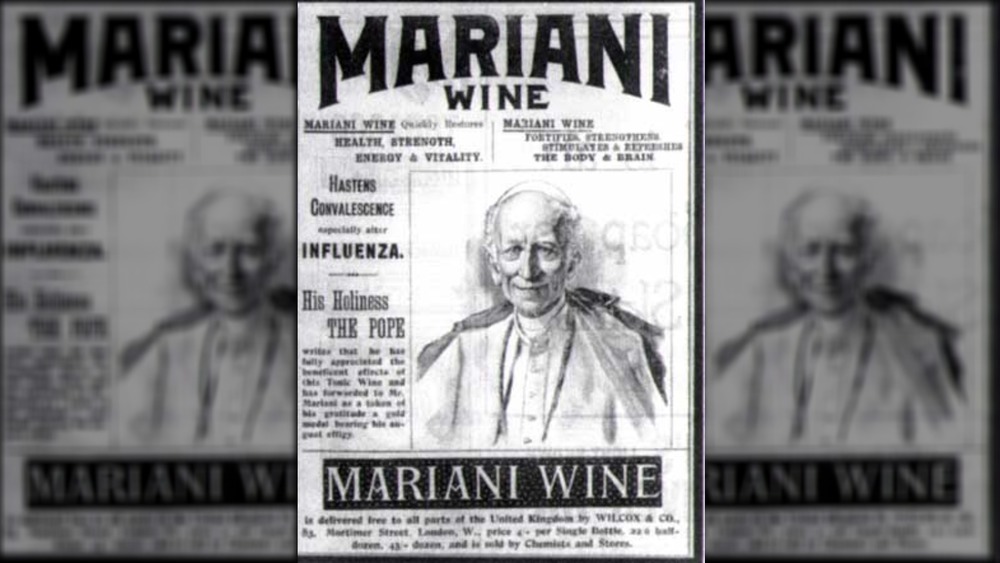The Truth About The Coca Wine Fad Of The Mid-1800s
Everyone knows about Coca-Cola's narcotic origins: cocaine was one of the soft drink's original ingredients. Luckily, regulators cracked down on the insalubrious recipe and made the company pack the drink full of healthy stuff like exorbitant amounts of caffeine and sugar. Better a country full of diabetics than cokeheads, right? Sure. But before taking the world by storm and becoming the behemoth company it is today (Market.us says that the world drinks 1.9 billion servings of Coca-Cola products every single day), there was another beverage craze that took over the United States and Europe and served as the precursor to the world's most famous soft drink. Before Coca-Cola, there was coca wine.
According to The Drinks Business, the coca wine craze swept through Europe in the mid-19th century. The drink was made by steeping the leaves of the coca plant — from which cocaine is derived — in wine and brandy. In this 1980s clubber's dream drink, the alcohol did what lime does in the process of making the now illegal drug: it extracted the cocaine from the plant and infused the wine with the highly potent stimulant. That's right, party people. If you'd have been born back in 1850, you wouldn't have to go to the trouble of finding a good dealer. The cocaine came already mixed in the wine. Ah, the good ole days. But how did this beverage come to be. And how did it lead to the refreshing shot of sugar we know and love today?
A Corsican chemist capitalized on the coca wine fad
Europeans first came across the uplifting effects of the coca plant during the conquest of the Americas in the 16th century. They found that people in Peru and other parts of South America chewed the leaves for a nice pick-me-up similar to the effects of a strong cup of coffee. In his popular 1855 novel Westward Ho!, English priest and professor Charles Kingsley called coca a "miraculous herb, which would ... make food unnecessary, and enable their lungs to endure that keen mountain air." The plant also received rollicking praise from an Italian scientist named Paulo Mantegazza, who ran some experiments with coca in the late 1850s. He published a paper that he most likely wrote while experiencing the invigorating effects of the coca plant, giving it a hyperbolic recommendation: "I would rather have a life span of ten years with coca than one of 10,000,000,000,000,000,000,000 centuries without coca."
Such exuberant admiration caught the attention of a chemist from the French island of Corsica named Angelo Mariani. Assuming correctly that the prim and proper European masses wouldn't go for chewing leaves like they did over in South America, he got to work on finding a way to make the drug more presentable. His Vin tonique Mariani à la Coca de Pérou, or Vin Mariani, hit store shelves in 1863, boasting a whopping 21 mg of cocaine in every 100 ml glass.
Coca wine came highly recommended by some of the most powerful people in the world
Mariani wine quickly became popular throughout Europe and the United States once people were turned on to its ability to stimulate the drinker not only out of exhaustion but pretty much any bad feelings altogether. And Mariani got some pretty high-level recommendations from all across society. The biggest names in science, technology, politics, art, and even religion gave Mariani wine a super-psyched thumbs-up, from U.S. President Ulysses S. Grant to light bulb inventor (kinda) Thomas Edison. The composers John Philip Sousa and Charles Gounod and novelist Émile Zola also vouched for the drink. But the most prominent endorsements were from a pair of guys who tend to know a bit about wine, though usually in terms of transmuting it into the blood of Christ, rather than infusing it with a party drug. Popes Leo XIII and Pius X both praised coca wine. Leo XIII even appeared in advertisements for Mariani wine that read, "His Holiness the Pope writes that he has fully appreciated the beneficent effects of this Tonic Wine."
Copycats soon stepped in to take advantage of the Western world's widespread acceptance of its newfound coke habit, many of which amped up the cocaine content, because, duh. So Mariani came out with a much more "beneficent" product that packed 25 mg of blow in each tiny 100 ml glass. One such copycat was Colonel John Pemberton, the inventor of Coca-Cola, and the rest is soda-pop history.


